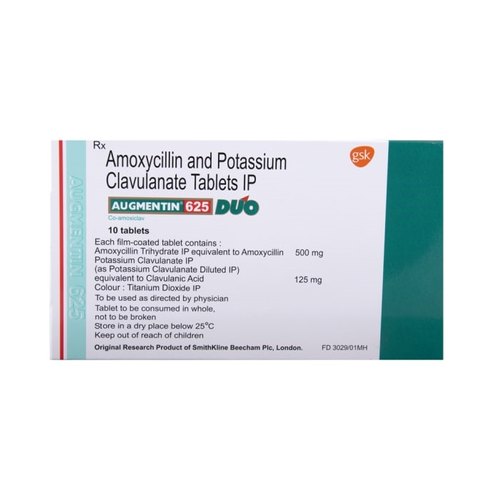Buy Augmentin EU | What is Augmentin?
Buy Augmentin EU – The above conditions may be treated with medications other than Augmentin; this medication is particularly beneficial in cases where the infection is caused by bacteria that are susceptible to amoxicillin but are resistant to amoxicillin alone. The potassium clavulanate in Augmentin enhances the potency of amoxicillin, making it effective where amoxicillin alone would provide little benefit. In both cases, with amoxicillin alone or when enhanced by potassium clavulanate, the medication works by inhibiting the growth and spread of bacteria, allowing the immune system to gain the upper hand. The mechanism of action of Augmentin involves inhibiting the growth and spread of bacteria. Amoxicillin interferes with the synthesis of bacterial cell walls, weakening the structure and making it easier for the immune system to combat the infection. The addition of potassium clavulanate in Augmentin further expands its antibacterial spectrum. It’s crucial to take Augmentin as prescribed by a healthcare professional and to complete the full course of treatment, even if symptoms improve before the medication is finished. Failure to complete the prescribed course may contribute to antibiotic resistance and the reoccurrence of the infection. If you have questions or concerns about the use of Augmentin, consult with your healthcare provider. They can provide personalized advice based on your specific condition and ensure that Augmentin is the most appropriate treatment for your bacterial infection.How does Augmentin work?
Augmentin is a combination antibiotic medication that contains amoxicillin and clavulanic acid.
Amoxicillin is a beta-lactam antibiotic that works by interfering with the formation of bacterial cell walls, ultimately leading to the death of the bacteria.
Clavulanic acid is a beta-lactamase inhibitor that helps to prevent the breakdown of amoxicillin by certain bacteria that produce beta-lactamase enzymes. Beta-lactamases are enzymes that some bacteria produce that can inactivate beta-lactam antibiotics like amoxicillin, rendering them ineffective.
By combining amoxicillin with clavulanic acid, Augmentin can effectively treat a wider range of bacterial infections by overcoming the resistance mechanisms employed by some bacteria.
Overall, Augmentin works by inhibiting bacterial cell wall synthesis and preventing bacterial resistance mechanisms, ultimately leading to the death of the bacteria and resolution of the infection.
How Do I use Augmentin?
Before taking Augmentin, note that different delivery modes (tablets versus chewable tablets or oral suspension) and different dosage strengths are not necessarily interchangeable. Be sure to look closely at the dosage strength of both medications; in the case of tablets, for example, both 500 mg and 250 mg amoxicillin tablets contain 125 mg potassium clavulanate — taking two 250 mg tablets to achieve a 500 mg dose of amoxicillin would result in a double dose of potassium clavulanate. Ideally, the medication is taken only after the bacteria causing the infection are identified; Augmentin is not effective against all strains of bacteria. In adults, treatment is similar for most conditions:- Take one 250 mg amoxicillin tablet every 8 hours or one 500 mg tablet every 12 hours.
- In cases of severe infection, 500 mg every 8 hours may be given.
- Taking it with food is not necessary, but is recommended to reduce stomach upset.
- Try to take each dose at the same time each day to keep levels of the drug consistent.
- Treatment typically lasts 10 days, but maybe a bit shorter or longer; it is rare for treatment to extend beyond 14 days.
- Never stop treatment early; doing so contributes to resistant bacteria.
Buy Augmentin EU | What are the side effects of Augmentin?
Note that patients allergic to penicillin are likely to experience an allergic reaction to amoxicillin. Likewise, patients that experience an allergic reaction to amoxicillin are likely to have reactions to other antibiotics in the penicillin family. If concerned about allergic reactions, most doctor’s offices offer inexpensive allergy tests. In some individuals, Augmentin may temporarily reduce the effectiveness of birth control pills, during and shortly after treatment. Augmentin is generally a safe medication with only mild side effects; even the more severe side effects are usually reversible if treatment is stopped. Certain conditions do increase the risk of potentially serious reactions, however:- Allergic reactions to other antibiotics
- Taking other medications
- Kidney or liver disease
- Mononucleosis
- Diarrhea
- Nausea
- Vomiting
- Stomach pain
- Headache
- Thrush
- Mild rash or itching
- Excessive, persistent diarrhea
- Blood in stools
- Symptoms of jaundice (yellowing skin or eyes)






Reviews
There are no reviews yet.